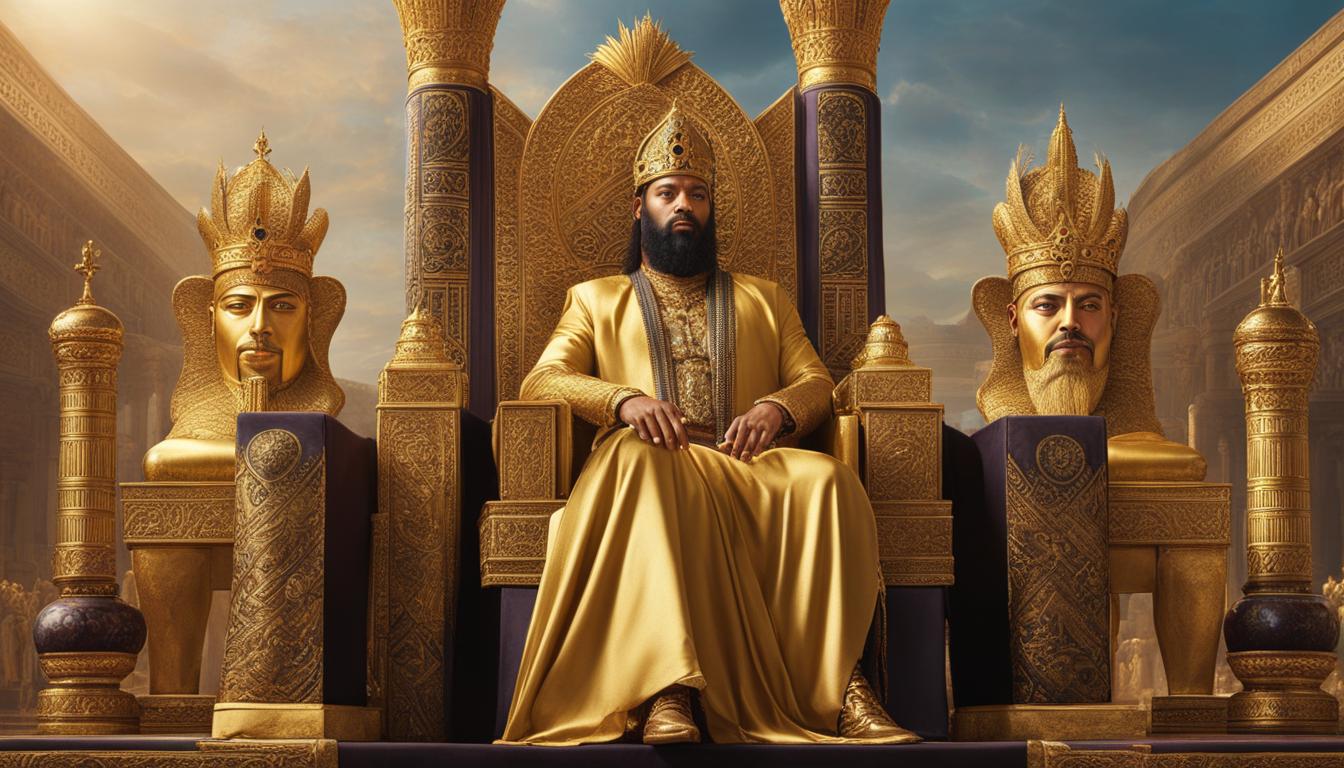Nebuchadnezzar II, Babylon, ancient Mesopotamia, Babylonian Empire, king, ruler, history, conquests, achievements, legacy, archaeology, Nebuchadnezzar’s Hanging Gardens, Ishtar Gate, Mesopotamian civilization
In the annals of ancient history, few figures loom as large as Nebuchadnezzar II of Babylon. This mighty king ruled over the Babylonian Empire during its zenith, leaving an indelible mark on the landscape of Mesopotamia and the course of world history. Through his conquests, architectural marvels, and contributions to culture, Nebuchadnezzar II earned a place among the most renowned rulers of antiquity.
Nebuchadnezzar II ascended to the throne of Babylon in 605 BCE, inheriting a kingdom that was already a dominant force in the region. Under his reign, Babylon flourished economically, politically, and culturally, becoming one of the greatest cities of the ancient world. His military campaigns expanded the borders of the Babylonian Empire, bringing vast territories under his control and solidifying his reputation as a formidable warrior king.
One of Nebuchadnezzar II’s most enduring legacies is his architectural prowess. He is famously credited with the construction of the Hanging Gardens of Babylon, one of the Seven Wonders of the Ancient World. These lush gardens, said to have been built for his homesick wife, showcased Babylon’s engineering ingenuity and mastery of irrigation. Although the exact location and existence of the Hanging Gardens remain a subject of debate among historians and archaeologists, their inclusion in ancient texts attests to their significance in Babylonian culture.
Another architectural marvel associated with Nebuchadnezzar II is the Ishtar Gate, a monumental entryway to the city of Babylon adorned with vibrant glazed bricks depicting mythical creatures and deities. The gate served as a symbol of the city’s wealth and power, impressing visitors with its grandeur and opulence. Excavations in modern-day Iraq have unearthed remnants of the Ishtar Gate, providing valuable insights into Babylonian art and craftsmanship.
Beyond his military conquests and architectural achievements, Nebuchadnezzar II played a pivotal role in shaping the cultural and religious landscape of ancient Mesopotamia. He is mentioned prominently in the Hebrew Bible, particularly in the Book of Daniel, where he is depicted as both a conqueror and a tormentor of the Israelites. Nebuchadnezzar’s interactions with the prophet Daniel and his dreams of a towering statue made of different metals have become iconic stories in Judeo-Christian tradition.
Nebuchadnezzar II’s reign also saw advancements in various fields, including astronomy, mathematics, and literature. Babylonian scholars made significant contributions to the study of celestial phenomena, developing sophisticated methods of observing and recording astronomical events. The Babylonian Chronicles, a series of historical texts documenting key events of the time, provide valuable insights into the political and military landscape of the ancient Near East.
Despite his many achievements, Nebuchadnezzar II’s legacy is not without controversy. His military campaigns, though successful, resulted in the subjugation and displacement of numerous peoples, leading to resentment and unrest in conquered territories. Additionally, his ambitious building projects, while impressive, imposed significant burdens on the labor force and strained the resources of the empire.
In conclusion, Nebuchadnezzar II of Babylon stands as a towering figure in the annals of ancient history. His reign marked a period of unparalleled prosperity and cultural achievement in Mesopotamia, leaving behind a legacy that continues to fascinate and inspire. From his military conquests to his architectural marvels, Nebuchadnezzar II’s impact on the ancient world reverberates through the ages, reminding us of the enduring power of human ambition and ingenuity.

